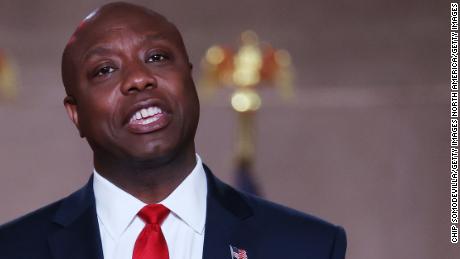
Dear Commons Community,
Business Insider published an analysis yesterday of those colleges that give students the best return on investment, based on post-grad salary and tuition figures.
To do this, it used the most recent available data from the Department of Education’s Scorecard that has figures like cost of tuition, enrollment, and student debt. We created a ratio of median earnings from 10 years after first attending college to the average cost of attendance.
Earnings data is from federally aided students and cost is from “full-time, first-time, degree-/certificate-seeking undergraduates who receive Title IV aid,” according to Department of Education’s notes on the available data. We only included schools that are mainly considered four-year, bachelor degree colleges and have at least 1,000 undergraduate students enrolled.
It is important to note that this is a simple ratio that doesn’t take into account other factors that might influence return on investment from college, such as the type of degree a student earned or whether they are receiving financial aid.
Educational news site Inside Higher Ed notes that colleges that have the best return on investment after 10 years may not be the same as those after 40 years, based on Georgetown University Center on Education and the Workforce’s own return on investment report. Researchers found public universities had a better return over 10 years than private nonprofit universities, although these private schools had a better return over 40 years. Similarly, a lot of public universities made the top of our list.
The 24 colleges with the best return on investment are listed below, expressed as a percentage based on our calculated ratios of 10-year earnings to average costs. We multiplied our costs by four to get an estimate of a typical four-year cost. Online-only colleges, maritime colleges, and some specialized colleges are excluded from our analysis. We also included the most recent figures of undergraduate student enrollment from the Department of Education.
I am pleased to see eight CUNY colleges in the top 24 with Baruch College capturing the No. 1 position.
I thank my colleague, Meghan Moore-Wilk, for alerting me to this article.
Tony
————————————————————————————————————-
Business Insider
The 24 colleges with the best return on investment
Madison Hoff
————————————————————————————————————–
- University of Houston-Downtown has a return on investment of 68.0%.
Location: Houston, Texas
Median earnings after 10 years: $45,000
Average cost of attendance: $16,547
Number of undergraduate students enrolled: 12,572
- Dalton State College has a return on investment of 68.0%.
Location: Dalton, Georgia
Median earnings after 10 years: $32,300
Average cost of attendance: $11,875
Number of undergraduate students enrolled: 4,715
- California State University-Stanislaus has a return on investment of 69.0%.
Location: Turlock, California
Median earnings after 10 years: $45,400
Average cost of attendance: $16,442
Number of undergraduate students enrolled: 9,272
- Georgia Institute of Technology-Main Campus has a return on investment of 69.4%.
Location: Atlanta, Georgia
Median earnings after 10 years: $79,100
Average cost of attendance: $28,501
Number of undergraduate students enrolled: 15,201
- University of Wisconsin-La Crosse has a return on investment of 69.7%.
Location: La Crosse, Wisconsin
Median earnings after 10 years: $48,000
Average cost of attendance: $17,213
Number of undergraduate students enrolled: 9,517
- College of Staten Island CUNY has a return on investment of 69.8%.
Location: Staten Island, New York
Median earnings after 10 years: $41,500
Average cost of attendance: $14,857
Number of undergraduate students enrolled: 11,815
- California State University-Bakersfield has a return on investment of 71.5%.
Location: Bakersfield, California
Median earnings after 10 years: $47,800
Average cost of attendance: $16,714
Number of undergraduate students enrolled: 9,142
- CUNY York College has a return on investment of 71.8%.
Location: Jamaica, New York
Median earnings after 10 years: $40,800
Average cost of attendance: $14,204
Number of undergraduate students enrolled: 7,126
- CUNY Lehman College has a return on investment of 75.0%.
Location: Bronx, New York
Median earnings after 10 years: $43,100
Average cost of attendance: $14,359
Number of undergraduate students enrolled: 11,559
- Augusta University has a return on investment of 75.5%.
Location: Augusta, Georgia
Median earnings after 10 years: $62,300
Average cost of attendance: $20,618
Number of undergraduate students enrolled: 5,146
- California State University-Dominguez Hills has a return on investment of 77.2%.
Location: Carson, California
Median earnings after 10 years: $44,700
Average cost of attendance: $14,469
Number of undergraduate students enrolled: 13,871
- The University of Texas Rio Grande Valley has a return on investment of 77.4%.
Location: Edinburg, Texas
Median earnings after 10 years: $41,900
Average cost of attendance: $13,534
Number of undergraduate students enrolled: 24,596
- California State University-Los Angeles has a return on investment of 77.8%.
Location: Los Angeles, California
Median earnings after 10 years: $46,100
Average cost of attendance: $14,823
Number of undergraduate students enrolled: 24,163
- CUNY Brooklyn College has a return on investment of 78.4%.
Location: Brooklyn, New York
Median earnings after 10 years: $43,900
Average cost of attendance: $13,991
Number of undergraduate students enrolled: 13,954
- CUNY City College has a return on investment of 80.2%.
Location: New York, New York
Median earnings after 10 years: $46,300
Average cost of attendance: $14,430
Number of undergraduate students enrolled: 12,503
- Farmingdale State College has a return on investment of 80.3%.
Location: Farmingdale, New York
Median earnings after 10 years: $51,700
Average cost of attendance: $16,091
Number of undergraduate students enrolled: 9,394
- Missouri University of Science and Technology has a return on investment of 80.9%.
Location: Rolla, Missouri
Median earnings after 10 years: $71,200
Average cost of attendance: $22,012
Number of undergraduate students enrolled: 6,785
- Texas A & M International University has a return on investment of 82.3%
Location: Laredo, Texas
Median earnings after 10 years: $45,800
Average cost of attendance: $13,914
Number of undergraduate students enrolled: 6,962
- Brigham Young University-Provo has a return on investment of 82.3%
Location: Provo, Utah
Median earnings after 10 years: $59,700
Average cost of attendance: $18,136
Number of undergraduate students enrolled: 31,441
- CUNY Hunter College has a return on investment of 84.3%.
Location: New York, New York
Median earnings after 10 years: $47,200
Average cost of attendance: $13,998
Number of undergraduate students enrolled: 16,205
- CUNY Queens College has a return on investment of 84.4%.
Location: Queens, New York
Median earnings after 10 years: $48,200
Average cost of attendance: $14,281
Number of undergraduate students enrolled: 15,645
- Utah Valley University has a return on investment of 84.7%.
Location: Orem, Utah
Median earnings after 10 years: $43,800
Average cost of attendance: $12,921
Number of undergraduate students enrolled: 28,278
- Brigham Young University-Idaho has a return on investment of 87.3%.
Location: Rexburg, Idaho
Median earnings after 10 years: $42,700
Average cost of attendance: $12,223
Number of undergraduate students enrolled: 37,636
- CUNY Bernard M. Baruch College has a return on investment of 101.8%.
Location: New York, New York
Median earnings after 10 years: $57,200
Average cost of attendance: $14,046
Number of undergraduate students enrolled: 14,629










